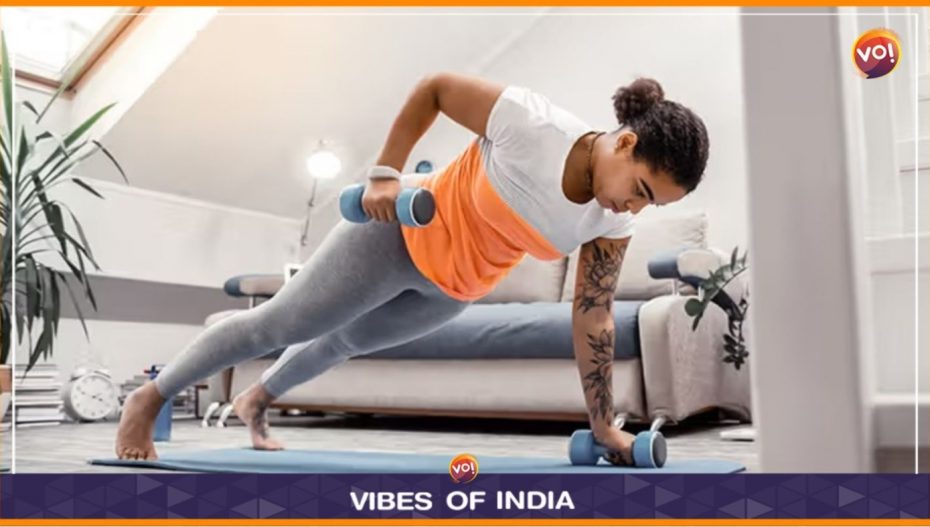You might have seen photos and videos of your favourite social media personalities talking about training barefoot. In recent times, many personal trainers and fitness experts are exercising without shoes or using minimalist (barefoot) shoes instead of traditional sneakers for the health benefits it offers.
Exercising barefoot can offer benefits for the feet as well as the body. It may improve agility, ankle stability, and the positioning of the joint, if done correctly. For some, this may relieve minor niggles like a low arch or pain from repetitive movements like running.
But people who aren’t accustomed to walking or training barefoot may get tired faster or could be more prone to injuries.
Newbies should preferably start by walking barefoot for about 5 minutes a day— which can just be around the house initially. Then, slowly barefoot training can be introduced by doing shorter workouts, warming up the feet before starting, and thinking about correct form and foot positioning throughout.
And if you prefer to literally have a bit more cushion before making a sudden transition, you can use minimalist shoes to adjust. Some people find transitioning to barefoot shoes helps to prepare the body for barefoot training.
When you work out barefoot, you have the ability to spread your toes (unlike in sneakers where they are often compressed), which creates a bigger contact surface with the ground that allows for greater stability.
Also, barefoot exercise can help to readjust feet that have changed shape over time because of footwear, something that greatly impacts stability.
Being barefoot is a natural part of being human. Getting back to your nature, re-learning your movement patterns, and improving muscle engagement increases the activation of proprioceptors, unequivocally bringing you better coordination, stability, and balance. This in turn leads to healthier joints and a significant reduction to the risk of injury, making you more biomechanically efficient.
Most running shoes are designed to help propel you forward, not to provide balance, so as a result, your feet don’t engage the right way, which leads to tighter muscles, increased pressure on joints, and weaker feet.
Training barefoot can reduce or remove foot pronation because it strengthens the feet and improves muscle tone allowing the arch to rise.
Working out barefoot helps increase foot movement and mobility. Training barefoot improves ankle mobility by connecting tissues from the toes, plantar fascia to the ankle.
While there are certainly benefits to wearing shoes, our bodies also change to accommodate the footwear which can lead to various consequences including weaker feet and unnatural weight distribution.
When you are barefoot, you’re engaging all your muscles in the proper manner which allows you to create the necessary connection between your tissues and ligaments because your body is not shifting in order to try to find balance.
One of the benefits of training barefoot is the sensory feedback you get when your feet connect directly with the ground. Our brain tells the body how to land our foot on the ground, including how much pressure to exert.
Your connection to the ground allows you direct access to know where you are moving in space at all times.
When we wear shoes, it’s more difficult to feel the surface and get sensory input making it easy to overcompensate. This can cause us to exert more force than we need to and, over time, results in damage to the joints.
However, there are certain riders when it comes to barefoot training. Some gyms may not permit working out without shoes based on their dress code as well as for safety reasons. Considering hygiene and cleanliness is also important. If there is an irregular surface or potentially poor hygiene conditions, it’s important to be cautious and carefully consider if this is the right environment in which to exercise barefoot.
Checking out the space where you plan to train is important before you ditch your sneakers. You shouldn’t train anywhere barefoot that could be a safety hazard. Ensure the space around you is clean—you have to watch out for your soles.
Deciding whether to exercise barefoot depends on each individual’s training level and experience with any particular activity. It is recommended to avoid high-impact workouts until you are very comfortable and confident with that exercise.
The type of workout is also important to consider whether you do it barefoot or with sneakers. When doing exercises such as jumping, it may be safer to train with shoes on to cushion the joints from the force of landing. Equally, if you are climbing or walking on sharp uneven surfaces, it’s best to refrain from training barefoot.
Working out barefoot may lead to certain health benefits, but ultimately it should only be done in safe, clean environments. Additionally, individuals should only work out barefoot if it’s within their comfort level.
Also Read: Narges Mohammadi’s Nobel Prize Turns Spotlight on Women’s Rights












